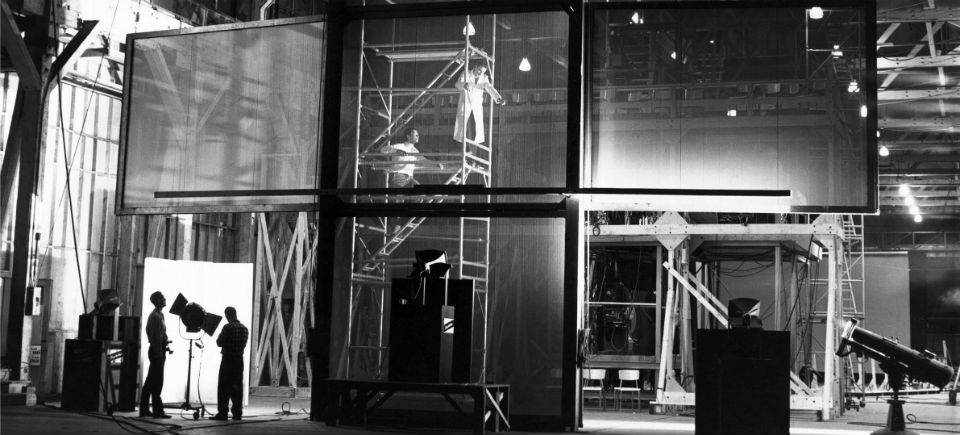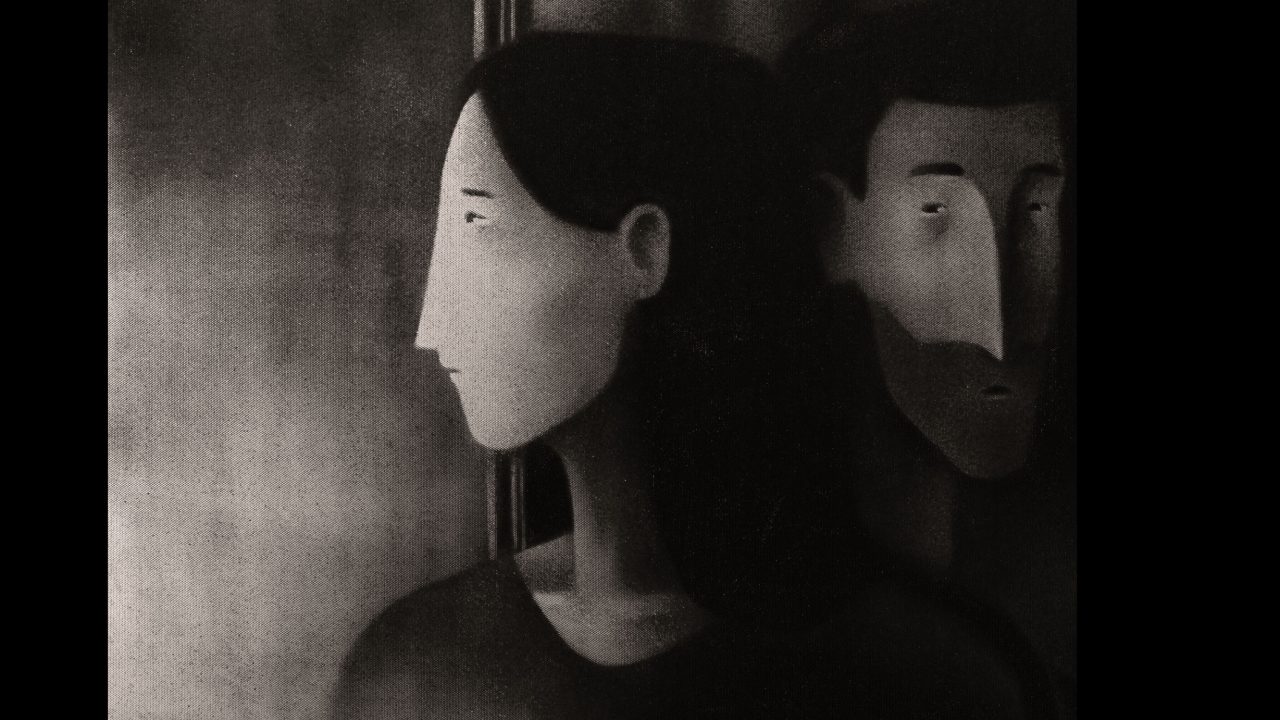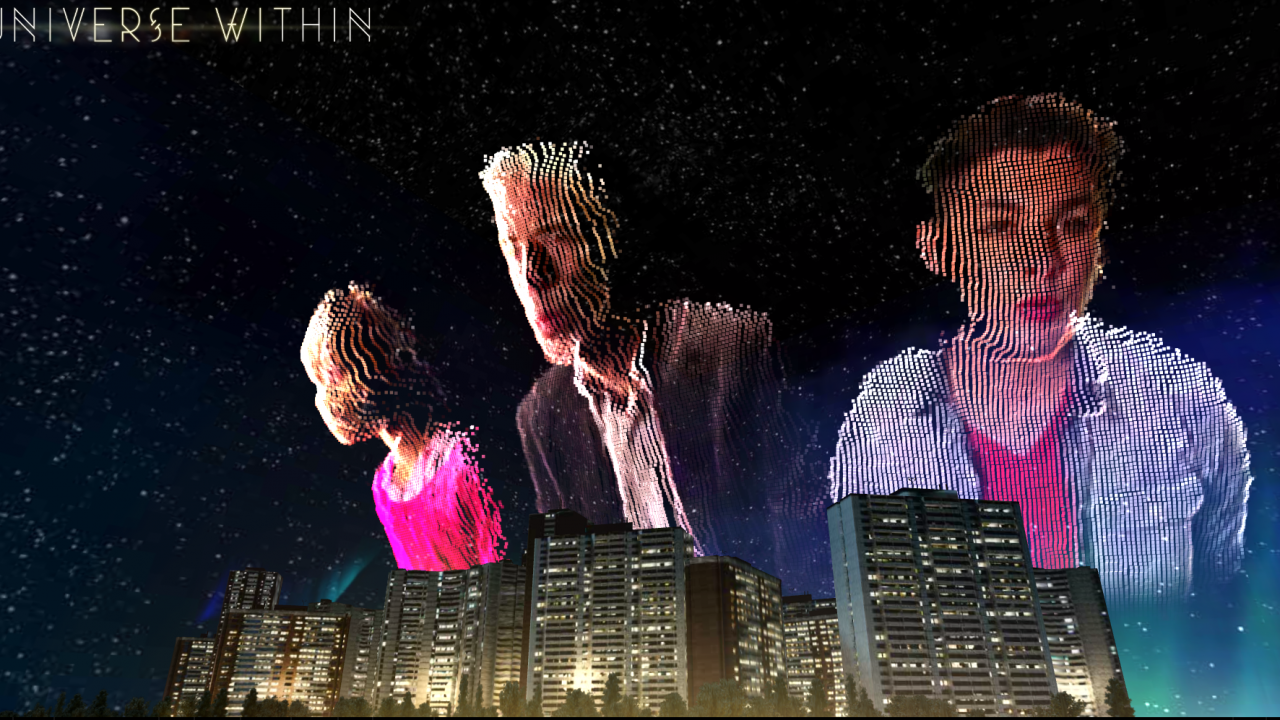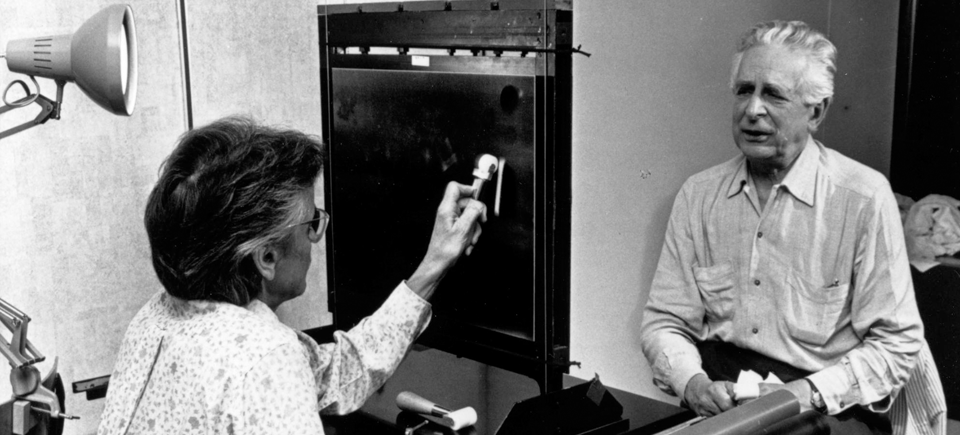
Technology in cinema: 5 NFB films that changed the game
Technology in cinema: 5 NFB films that changed the game
The NFB has been at the forefront of revolutionizing film technology for over seven decades. From SANDDE to Imax 3D to the groundbreaking tactile animation of Norman McLaren, we’ve always been into trying new things! This week on NFB.ca, we bring you some of our most technologically pioneering films, like one of the first films ever made with computer-generated animation.
Read on to find out more about how the NFB has broken new ground in filmmaking over the years.
Multiple screens and over a million views: In the Labyrinth
The NFB had a grand presence at the infamous and gargantuan Expo ’67 in Montreal, widely considered to be the most successful World’s Fair of the 20th century. In an ambitious project to tell the worldwide story of humankind, the NFB created the Labyrinth Pavilion, a five-story structure that offered visitors an immersive multimedia experience, including the five-screen film In the Labyrinth.
The Labyrinth Pavilion cost $4.5 million at the time. Yikes! Innovative technology sure can cost a pretty penny…
In the Labyrinth, Roman Kroitor, Colin Low & Hugh O’Connor, provided by the National Film Board of Canada
This grandiose film/installation required great planning and execution: “scenes were shot with five cameras running simultaneously on a cross-shaped mount,” writes NFB collection curator Marc St-Pierre.
“They were then projected on five separate screens in a similar cruciform arrangement. The technique required faultless synchronization among the cameras, the editing equipment and the projectors. The results promised to be spectacular: viewers would never have seen anything like it.” (Want to know more? Head over to this post.)
Computer-generated animation… at the dawn of computers
In the late 1960s and early 1970s, filmmaker Peter Foldès, in collaboration with the NFB and the National Research Council (NRC), began experimenting with the SEL-840A General Purpose Digital Computer (that thing was the size of a fridge!) to create some of the first computer-generated animated films ever.
1974’s Hunger was created with the SEL-840A and a Computek graphics tablet. The seamless morphing imagery is accentuated by a truly sombre and atmospheric soundtrack to create a disturbing picture of greed and covetousness. Check it out:
Hunger, Peter Foldès, provided by the National Film Board of Canada
The painstaking method in this film involved “mapping an image in one key frame to the next one, on a stroke-to-stroke basis,” according to the book Cartoon Capers: The History of Canadian Animation by Karen Mazurkewich.
“When the work on the computer was completed,” writes Mazurkewich, “each scene was filmed on several 35-mm black and white film sequences to be combined and coloured optically into the final composite. It took a year for the NFB to carry out tests on the optical printer and to merge the separate sequences to produce a satisfactory result.”
Now that’s no small feat!
A new technology for Stompin’ Tom Connors
In 2004, filmmaker Paul Morstad set out to animate a whimsical short film set to the snappy tune “Moon Man Newfie” by beloved Canadian folk singer Stompin’ Tom Connors. The result was Moon Man, the amusing tale of folk hero Codfish Dan, who made Newfoundland history after a lucky fishing trip on the Milky Way.
Morstad used the SANDDE system, developed by the IMAX corporation and further honed here at the NFB. The software was created to facilitate hand-drawn, stereoscopic 3D animation (although the film shown here on the blog is only the 2D version, of course).
Moon Man, Paul Morstad, provided by the National Film Board of Canada
Want to know more about SANDDE? Check out a 2-part interview (part 1 here and part 2 here) with Maral Mohammadian, a Production Manager and currently a Producer at the NFB’s animation studio in Montreal.
The pinscreen animation technique in Mindscape
The pinscreen animation technique is possibly the most pain-staking moving image creation method I’ve ever heard of! But it also creates some of the most hypnotic and stunning results. Basically, it involves pressing shapes and objects into a panel full of tiny movable pins.
In Jacques Drouin’s pinscreen-animated short Mindscape, a curious artist enters the world of his own paintings. Take a look:
Mindscape, Jacques Drouin, provided by the National Film Board of Canada
Pinscreen animation was initially developed by Alexandre Alexeïeff and his wife Claire Parker in Paris in the 1940s and refined later at the NFB. For a more recent example of this curious and mesmerizing technique, check out 2012’s Here and the Great Elsewhere by Michèle Lemieux.
The beauty of Canada revealed through IMAX HD
Momentum was one of the first films to be shot and projected in IMAX HD, a technology that captures 48 frames per second (double the normal 24) to create a smoother and less blurry image in motion.
Want to know what it’s like to plunge down a twisting mountain gorge or race across the frozen Arctic with a team of sled dogs? Jump into this high-def coast-to-coast adventure now:
Momentum, Colin Low & Tony Ianzelo, provided by the National Film Board of Canada
Momentum premiered at the Canada Pavilion of the Seville Expo ’92. “Spectators in Seville marvelled at the exceptionally clear and fluid images,” writes NFB collection curator Marc St-Pierre. The film was projected on a screen ten times larger than normal, and “just as remarkable was the sound design for the film. The production team employed a state-of-the-art recording and mixing system called Ambisonic, which immersed the audience in an amazingly realistic ‘wraparound’ sound field.”
We hope you think the NFB’s achievements in pioneering technology are as impressive as we do. What’s on deck for the future? We’ve already racked up accolades for our creative work in interactive documentary, a new model of web-based storytelling that puts audiences in the driver’s seat.
What do you think the future of image-based storytelling has in store for us? I’d say the sky’s the limit.




Theseare indeed impressive contributions, for which NFB should be proud!
Yes, except in the blog text you’ve spelled it “pain-staking”.
I’m sorry, but I don’t see that. As far as I can tell, the only instance of this word in my post is in the sentence “The painstaking method in this film involved…” (located below the film “Hunger”). Can you point me to where in the post the word is spelled incorrectly? Thanks!
You have Borked Unicode in the name of the director of Hunger, and “painstaking” is not writ-ten the w-ay you wrote-e it.
Hi Joe,
Thanks for your comment. The current edition of the Canadian Oxford Dictionary spells “painstaking” without the dash, as one word. And unfortunately, we are experiencing an error with the formatting of the director’s name underneath the video player, but we are working on fixing this very soon.